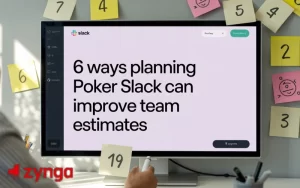In the world of project management and agile development, accurate estimation is key to ensuring that tasks are completed on time and within scope. One widely used technique for estimating project tasks is Planning Poker Estimation. This method is known for promoting collaboration, improving accuracy, and encouraging engagement among team members. In this article, toy blast, we’ll discuss 7 poker tips for effective planning poker estimation that can help your team work more efficiently and produce better results.
What is Planning Poker Estimation?
Before diving into the tips, it’s important to understand what planning poker estimation entails. Planning poker is a consensus-based technique used by agile teams to estimate the effort or complexity of tasks. Team members are given a set of cards with numbers (often following the Fibonacci sequence) and are asked to select a card that represents their estimate for a given task. The cards are revealed at the same time, and a discussion follows to reach a consensus.
This process encourages collaboration, prevents anchoring bias (where the first person to give an estimate may influence others), and helps identify potential risks and uncertainties early in the process.
1. Set Clear Objectives Before the Estimation Session
Effective planning poker estimation starts with a clear understanding of the objectives of the meeting. Before diving into the actual estimation process, make sure that every team member understands the task at hand. Whether it’s a user story, feature, or backlog item, it’s essential that the scope is well defined.
Inadequate task definitions can lead to confusion during estimation, making it difficult to reach a consensus. Therefore, take the time to review the requirements and ask any clarifying questions before beginning the session.
Tip: Consider using User Stories and Acceptance Criteria to define tasks clearly. The more specific the task, the easier it will be to estimate accurately.
2. Involve the Entire Team in the Estimation Process
One of the core strengths of planning poker estimation is the collective input of the entire team. Rather than relying on a single person to determine the estimate, planning poker leverages the knowledge and expertise of everyone involved in the project. This collaborative process helps ensure that the estimation reflects a more well-rounded perspective.
Tip: Ensure that all relevant team members, including developers, testers, and product owners, are present during the session. Each perspective contributes valuable insights into the complexity and effort involved in completing the task.
3. Embrace the Discussion After Each Round
After each round of planning poker, when the cards are revealed, take the time to discuss the estimates, especially when there is a large variance. Differences in estimates often highlight uncertainties or misunderstandings about the task. It’s important to have an open discussion about why team members chose specific values and to address any potential risks.
Tip: Encourage team members to share their reasoning behind their estimates. This promotes a deeper understanding of the task and often uncovers potential challenges that were not initially apparent.
4. Use the Fibonacci Sequence for Estimation
A key feature of planning poker estimation is the use of the Fibonacci sequence (1, 2, 3, 5, 8, 13, 21, etc.) for task sizing. This sequence helps to avoid overcomplicating the estimation process. The larger the task, the less precise the estimation tends to be, so the Fibonacci sequence reflects this natural uncertainty.
Tip: Stick to the Fibonacci sequence for task estimates. It encourages simplicity and prevents the team from overthinking the process, leading to more accurate and consistent estimates.
5. Avoid Anchoring Bias by Revealing Cards Simultaneously
One common problem in estimation sessions is anchoring bias, where the first estimate given has a disproportionate influence on the rest of the team. In planning poker, all team members reveal their cards simultaneously to prevent this bias from affecting the outcome.
Tip: Always ensure that everyone reveals their estimate at the same time. This practice prevents one person’s estimate from unintentionally influencing the rest of the group and leads to a more balanced discussion.
6. Take Time to Revisit Estimates as the Project Progresses
Estimates are not set in stone, and it’s essential to revisit them as the project progresses. Planning poker estimation is an iterative process, and the team should continue to assess the accuracy of their estimates as more information becomes available. If unexpected challenges arise or new tasks are added, re-estimate as needed.
Tip: Schedule regular review sessions to update estimates based on evolving requirements. This helps keep the project on track and ensures that any new challenges are accounted for.

7. Keep the Sessions Time-boxed and Focused
While it’s important to discuss and debate estimates, it’s equally important to keep the planning poker sessions focused and time-boxed. Long meetings can lead to fatigue, which reduces the quality of the discussion and the accuracy of the estimates. Time-boxing ensures that the team stays on track and prevents the process from dragging on unnecessarily.
Tip: Set a clear time limit for each session (e.g., 30 minutes to 1 hour). If the team is struggling with a particular task, it may be a sign that further clarification is needed. However, avoid prolonged debates, as they can derail the entire session.
How Effective Planning Poker Estimation Can Benefit Your Team
By implementing these 7 poker tips for effective planning poker estimation, your team can benefit in several ways:
- Increased Accuracy: Collaborative input leads to more accurate estimates, which can improve the overall planning process and avoid surprises later on.
- Better Communication: The discussion aspect of planning poker promotes transparency and ensures that everyone is aligned on the scope and challenges of a task.
- Higher Engagement: Planning poker encourages active participation from everyone, which can boost morale and help identify potential risks early.
- Improved Project Management: With more accurate estimates, project managers can plan more effectively, allocate resources efficiently, and set realistic deadlines.
Conclusion
Planning poker estimation is a powerful tool for teams looking to improve their project management and estimation accuracy. By following the 7 poker tips for effective planning poker estimation, you can create a more collaborative, accurate, and efficient estimation process. From setting clear objectives to keeping the sessions time-boxed, each tip contributes to making planning poker a more effective technique for agile teams. With the right strategies in place, your team will be well-equipped to handle complex tasks and deliver successful projects on time.










